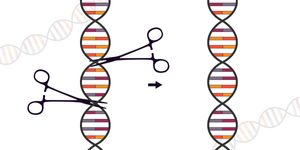What Temperature is a Problem for Life on Earth?
Researchers led by the Technical University of Munich have identified both preferable and dangerous temperature ranges for humans, cattle, pigs, poultry, fish, and agricultural crops. The study was published in The Lancet Planetary Health.
For the research, the researchers reviewed the literature on temperature thresholds for humans, livestock, poultry, agricultural crops, and some fisheries.
They found that preferable temperatures for all species studied range between 17 and 24 degrees Celsius. Humidity affects this range. When humidity is higher, stress temperature thresholds are lower. For example, mild heat strain for humans begins at 23 degrees Celsius in high humidity and 27 degrees Celsius in low humidity.
"If people are exposed to temperatures above 32 degrees Celsius at extremely high humidity or above 45 degrees Celsius at extremely low humidity for a lengthy period of time, it can be fatal," says Senthold Asseng, one of the study’s authors.
"During extreme heat events with temperatures far above 40 degrees Celsius, such as those currently being observed on the U.S North West Coast and in Canada, people require technical support, for example in the form of air-conditioned spaces."
For cattle and pigs, heat strain tends to occur at 24 degrees Celsius in high humidity and 29 degrees Celsius in low humidity. Meanwhile, poultry tend to prefer temperatures between 15 and 20 degrees Celsius.
Nevertheless, heat strain in all species was shown to reduce growth, and thus lower yields and reproductive ability. The researchers noted however that some species are better adapted to different climates, such as Transylvanian naked chickens, which are more resilient to heat than other varieties.
Meanwhile, crops tend to have more diverse temperature ranges according to their species and varieties. For example, wheat does better at colder temperatures, whereas corn is sensitive to frost yet can tolerate higher temperatures.
"By the end of the century, 45 to 70 percent of the global land area could be affected by climate conditions in which humans cannot survive without technological support, such as air conditioning. Currently, it's 12 percent," says Asseng.
"Genetic adaptation to a changing climate often takes many generations. The time available is too short for many higher forms of life. If current climate trends persist, many living things could be severely affected or even disappear completely from Earth due to temperature change."
Sources: The Lancet Planetary Health, Technical University of Munich









